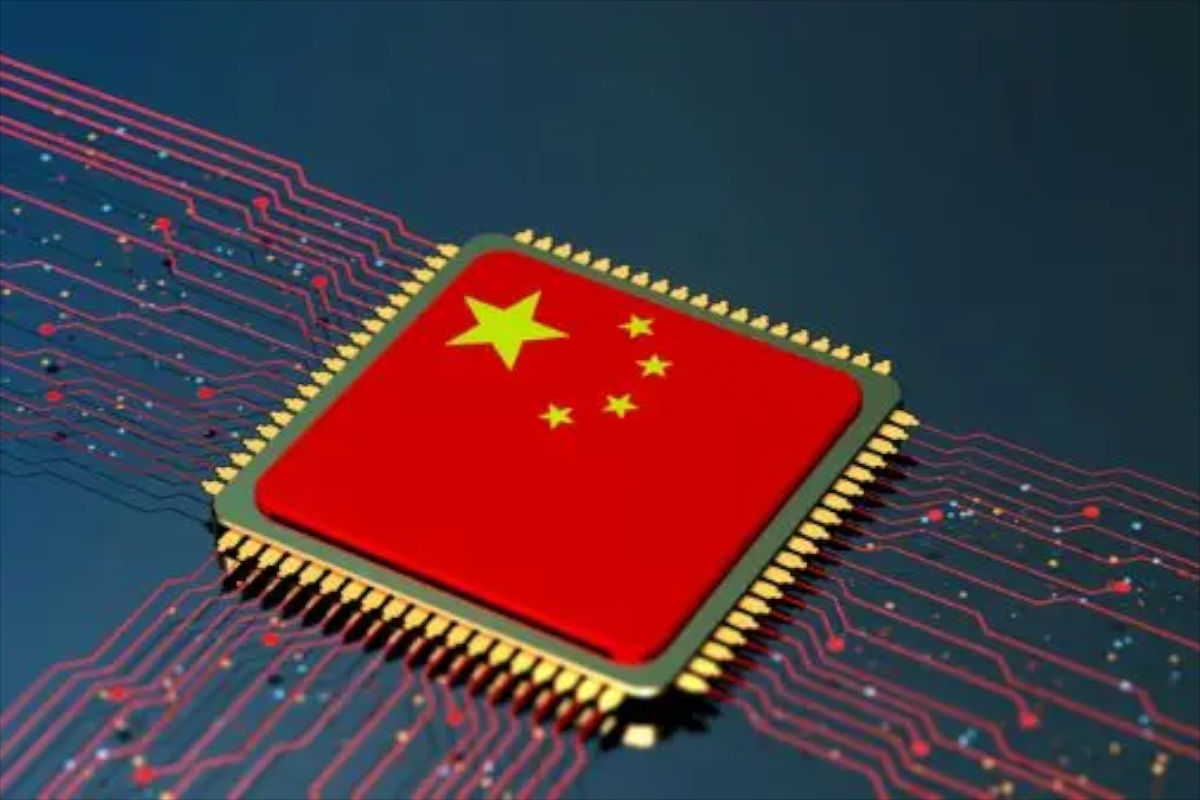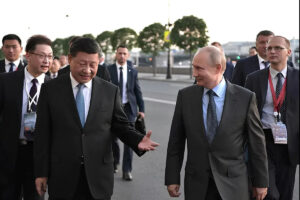Sanctions Become Building Material
In 2025, Chinese companies purchased $38 billion worth of Western chipmaking equipment — even as Washington continued to publicly proclaim “total control.” In reports, this looks like a leak, but in reality it’s an act of revelation — a demonstration of how sanctions have turned into a profitable export of ideology. The empire of prohibitions feeds on itself: every new barrier becomes another business model labeled “national security.”
America wanted to freeze Asia’s industry but triggered something closer to thermonuclear fusion — an energy of self-sufficiency that can no longer be stopped. The White House builds a “technological ring,” and Asia calmly turns that ring into its own orbit. Every sanctions barrier becomes a laboratory, every embargo — a university of engineering resistance. The West closed the doors, and the continent built a wall of microchips, where each transistor functions as a brick of internal consolidation.
Sanctions no longer destroy economies. They have redesigned the political geography. Digital infrastructure has become the new frontier of the era — a boundary between those who maintain power through control and those who create it through production.
A New Form of Defense
In the Asian technological landscape, a distinct security architecture is taking shape. China invests $47 billion annually in its semiconductor sector. South Korea is launching the “K-Chips Act 2.0” — a project where national industry is linked to the tax and procurement system, turning the state apparatus into a production engine. India is building the Bharat Semiconductor plant — the first symbol of how the country is rewriting its role in the global hierarchy.
The corporate level moves in the same rhythm. SK Telecom is forming a “sovereign AI cloud,” Huawei is constructing an internal ERP ecosystem, and ByteDance is testing industrial operating systems — digital bastions of a new era. The same infrastructural self-assembly is visible across the continent — from data corridors to logistics backbones — where Beijing’s integration drive quietly reshapes Eurasia’s power geography. This is the new doctrine of survival. Control over data and production chains becomes a weapon of lasting effect — a strategic resource that no decree from Washington can freeze.
The region is entering a phase of technological autonomy. Domestic infrastructure now carries geopolitical weight, and industrial policy has become a way to preserve sovereignty. Sanctions provided the ignition, but the trajectory was defined by the continent itself. Its strength is now measured not by external guarantees, but by its internal capacity to build — even upon the ruins of foreign prohibitions.
The Western Blockade and the Boomerang Effect
When Washington restricted exports of NVIDIA’s H100, H200, and H20 chips, analysts expected China’s market to collapse. The decision was anchored in a broader regulatory framework that extended export control to AI model weights and compute resources — effectively attempting to contain innovation through bureaucracy. The reality turned out politically indecent: the revenues of Cambricon and Biren grew by 300–400%, and domestic demand for computing power exceeded all forecasts. Sanctions created a vacuum that local players immediately filled.
Beijing responded with composure and precision — expanding export controls on rare earth elements and graphite. It became a mirror reflecting the West’s own vulnerability. The balance of power is now measured by the ability to withstand supply disruptions.
The American blockade has turned into a technological centrifuge, spinning regional integration faster. The tighter the restrictions, the quicker Asia’s supply chains close upon themselves, the stronger its industrial joints become. Washington wanted to stop time, but instead launched a new chronology. The empire that feared losing its leadership has accelerated its own end.
The Formation of a Parallel Technological Civilization
Every new wave of sanctions in Asia turns into construction. The continent responds with servers in new data centers. More than sixty national programs for digital sovereignty are already in motion. China’s “Xinchuang” project is assembling an ecosystem of domestic software for governance, industry, and finance. Indonesia mandates that the data of citizens and companies be stored within the country. Vietnam, Malaysia, the Philippines, and South Korea are all following the path of technological localization, where code becomes a component of national defense.
New ERP platforms and AI frameworks have shed their dependence on Western prototypes. They grow from their own needs — from a regional logic where scale matters more than fashion, and resilience outweighs the “innovation” of Silicon Valley. This is the assembly of another civilization, where every line of code is a building block of sovereignty.
The parallel technological circuit is no longer the shadow of the global economy — it is its new nerve. It may be invisible from the coast of California, but it is clearly seen in budgets, strategies, and factory floors. Asia is no longer a stage for someone else’s competition. The continent has become a construction site for a new world — one whose architecture is built not to Western standards, but to its own logic of ownership and responsibility. The West still dreams of export control, but the chain reaction it set off is already irreversible. Digital autonomy is turning into territory. And territory, as always in history, becomes politics.
The Age of Technological Sovereignty
Control over technology has ceased to be a measure of control over the future. Power has shifted to where dependencies are formed. Asia was the first to understand that real influence is born from infrastructure. The region’s states are developing their own protocols, standards, and data protection systems. Each new regulation is a brick in the wall that upholds the right to a digital destiny of their own.
The world is entering an era of a multicore technological order. Ecosystems have become political actors — with flags, budgets, and security ideologies. China, India, South Korea, and the ASEAN states are no longer supply chains but nodes of power, connected by an internal logic of mutual interdependence. This same redistribution of agency extends beyond the digital domain — into trade, finance, and maritime routes, where the new architecture of autonomy already functions as economic geography. In this system there is no center, only a field — dense, interconnected, and resistant to external pressure.
Embargoes conceived as instruments of punishment have become schools of discipline. Asia has turned external pressure into the rhythm of self-assembly. Every restriction accelerates engineering maturity; every limitation becomes an argument for autonomy.
Asia does not break down barriers — it turns them into the load-bearing walls of its own house. And that house already stands on the world map: a continent of digital sovereignty, where technology serves independence.





